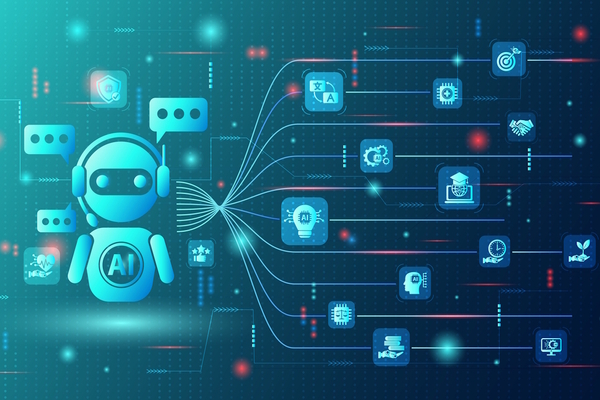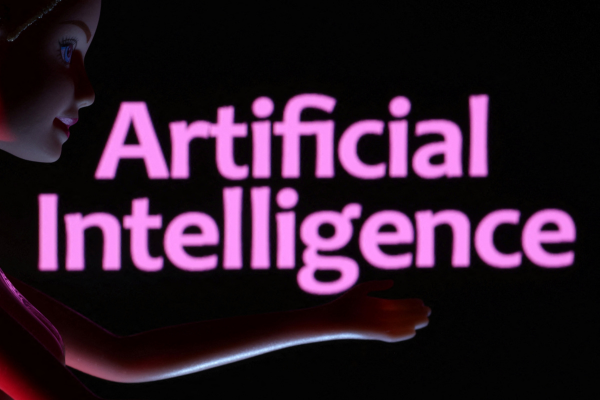AI and automation: the next stage of digital transformation

Geoff Kneen at Content+Cloud explains how businesses can drive freedom and efficiency with AI and automation
If the last few months have made anything clear, it is that Artificial intelligence (AI) and automation have well and truly arrived in the broader conscience of business leaders. With viral natural language processing (NLP) models like ChatGPT and Bard making waves, AI is no longer a futuristic concept, but a mainstream tool.
Yet even though the average consumer has embraced these tools, many businesses are still wary of taking that step to integrate AI into their business processes. While some fears are not unfounded, business leaders must understand where and how advanced technologies can deliver maximum value and ROI.
The benefits of advanced automation
AI and automation are two of the most transformative business components in our time and are already significantly impacting organisations of all sizes.
As these technologies become more sophisticated, they can automate more tasks, increasing productivity, efficiency, and innovation. Automation frees up time for employees, who could be stuck doing repetitive manual tasks such as data entry or report generation. It allows them to spend more time on higher-value tasks such as problem-solving, creative thinking and innovating new products and services.
It’s not just innovation and productivity that increase with automation; AI and data management tools and platforms also reduce risks associated with human error. According to a 2022 Verizon report, 82% of all data breaches involve a human element, which includes social attacks, errors and misuse.
Of course, the effectiveness of advanced data management tools depends on data quality and implementation, but once these elements are in place, errors and inconsistencies are drastically reduced, while accuracy and consistency increase. This lays the foundation for more advanced use cases for AI and machine learning, as models require high quality, consistent data.
By reducing errors and ensuring data across an organisation is in a usable state, automation, insights, and innovation can be supercharged, with businesses able to make quicker and more informed decisions. Automated systems are also not ‘on the clock’, which allows businesses to provide the services and support underpinned by these systems to customers 24/7.
The adoption and implementation of AI-powered solutions and services can be a daunting prospect for many organisations—particularly for those that may be operating with on-premises legacy infrastructure. Increasingly, however, cloud services, such as IaaS, PaaS, and SaaS offerings, can provide a fast route to innovating with advanced technologies.
Advanced workloads, such as big data analysis or the training of machine learning models, for example, require a vast amount of computational power, requiring hundreds of servers to operate at any one time. Today, cloud providers run virtual servers that can be spun up and down on an ad hoc basis, delivering the flexibility to handle large workloads when required.
Cloud infrastructure is scalable, reliable, secure, cost-effective, and, with the proper guidance, easy to adopt, which makes it ideal for quickly unlocking the benefits of automation.
The ways AI can be utilised
In some instances, organisations may not be aware that AI and automation can be quickly harnessed across platforms they have already adopted. For example, Microsoft Viva, Microsoft’s employee experience platform, has been fully integrated with Teams and has many advanced capabilities that can improve productivity.
Viva Topics, also uses AI and machine learning to automatically surface information and expertise across an organisation, allowing employees to access exactly what they need, precisely when they need it, without seeking out subject matter experts.
Microsoft Syntex, another feature in Microsoft 365, uses AI to read and understand documents like a human, enabling processes related to documents such as contracts, service agreements, risk assessments, loan applications, safety reports, CVs, invoices, and others to be streamlined.
Another example from Microsoft is the planned integration of the underlying model behind ChatGPT into a series of ‘AI copilot’ tools in Office apps and Teams. Microsoft 365 Copilot promises a new way of working where AI can write, edit, and summarise content based on a prompt – perhaps creating a first draft sales presentation, project report, or job advert from just a few words.
In Teams, AI will be used to automate notes and tasks from meetings based on the transcripts of conversations. It will also highlight and section off the most salient sections and topics covered in a meeting, and provide suggested follow-up actions.
Other technologies that can be utilised to drive freedom and efficiency in specific business processes, are Power Automate, Azure Cognitive Services, and AI Builder. Power Automate is a cloud-based service that allows businesses to create automated workflows between apps and services. This can be used to automate approvals and notifications, streamline customer support requests, and automate data entry tasks.
Azure Cognitive Services provide pre-built AI models businesses can use to build intelligent services into their apps and solutions. This can be used to enable image recognition and tagging, language translation, speech transcription, and sentiment analysis.
Lastly, AI Builder is a no-code/low-code AI platform that allows businesses to create custom AI models and automate processes without requiring extensive data science expertise. It can be used to automate form processing, create chatbots, and predict customer behaviour.
Overcoming challenges
There are many benefits to embracing AI and automation, but there are, of course, challenges that may hamper the returns many associate with adopting specific tools and platforms. One common challenge is understanding the critical factors in whether AI and automation are likely to benefit particular organizational goals or use cases.
There may be dependencies on data availability or usability, siloed systems that need a level of integration, behavioural norms to adjust, or processes that can be dramatically simplified based on new possibilities.
It’s also essential to have skilled and knowledgeable employees or technology partners, who can not only evaluate specific opportunities but also ensure the strategic approach to AI and automation is appropriate.
The new era of AI brings a series of considerations around privacy and security (amongst others), and specific governance, risk and compliance expertise is needed to navigate this. Similarly, as more organisations explore how technologies like ChatGPT can integrate with their organizational data and resources rather than generic internet sources, a technology partner with this context can accelerate such efforts.
The best advice businesses can take is to adopt a culture of controlled experimentation around AI and automation. Organisations should always start with a small project and then seek to scale up as they gain experience. This will allow them time to see what’s possible within the confines of the data they hold, which will then reveal what data is required to deliver more advanced use cases.
Once this is determined, the organisation will be able to understand where the data skills gaps may be for employees, and where hiring staff with relevant skills may prove useful.
The importance of embracing AI and automation for businesses is undeniable. Cloud applications, platforms, and many open-source tools, can quickly deliver value, but understanding where an organisation is on its data journey, and therefore its ability to accommodate more advanced data tools requires a deeper assessment of existing technology investments, in-house skills, and data assets.
Once these components are fully understood, a robust roadmap of data-led digital transformation can be laid out.
Geoff Kneen is CEO at Content+Cloud
Main image courtesy of iStockPhoto.com

Business Reporter Team
Most Viewed
Winston House, 3rd Floor, Units 306-309, 2-4 Dollis Park, London, N3 1HF
23-29 Hendon Lane, London, N3 1RT
020 8349 4363
© 2025, Lyonsdown Limited. Business Reporter® is a registered trademark of Lyonsdown Ltd. VAT registration number: 830519543





